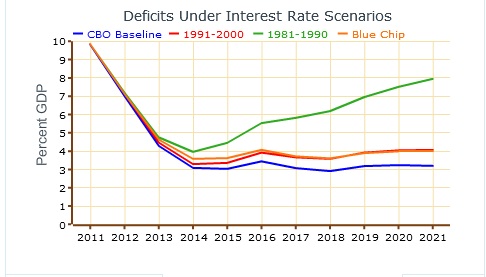Mark Twain once said, ” There is no true criminal class in America with the possible exception of Congress.” It’s time to withdraw the qualifier. It is now apparent that, with a few rare exceptions, Congress is a criminal enterprise and the Obama Administration is, as well. Here is the story of part of it.
“To entrench Fannie’s privileged position, Morgenson and Rosner write, Johnson and Raines channeled some of the profits to members of Congress — contributing to campaigns and handing out patronage positions to relatives and former staff members. Fannie paid academics to do research showing the benefits of its activities and playing down the risks, and shrewdly organized bankers, real estate brokers and housing advocacy groups to lobby on its behalf. Essentially, taxpayers were unknowingly handing Fannie billions of dollars a year to finance a campaign of self-promotion and self-protection. Morgenson and Rosner offer telling details, as when they describe how Lawrence Summers, then a deputy Treasury secretary, buried a department report recommending that Fannie and Freddie be privatized. A few years later, according to Morgenson and Rosner, Fannie hired Kenneth Starr, the former solicitor general and Whitewater investigator, who intimidated a member of Congress who had the temerity to ask how much the company was paying its top executives.”The latter item is just to show that the corruption was bi-partisan. The quoted text above was written by Robert Reich, the left wing former Clinton Labor Secretary.
Johnson was the man chosen by Obama to vet his possible VP choices. When his history came to the public’s attention, he quickly withdrew. He had no financial background at the time he became the chief of Fannie Mae. He was a pure political animal.
The most telling recent blow is the bankruptcy of MF Global, a commodity trading firm run by Job Corzine, former governor of New Jersey. It appears that he stole $600 million of investor’s money. Another commodity trader has now closed her fund and returned her customer’s money. Here’s why: “The reason for my decision to pull the plug was excruciatingly simple: I could no longer tell my clients that their monies and positions were safe in the futures and options markets – because they are not. And this goes not just for my clients, but for every futures and options account in the United States. The entire system has been utterly destroyed by the MF Global collapse. Given this sad reality, I could not in good conscience take one more step as a commodity broker, soliciting trades that I knew were unsafe or holding funds that I knew to be in jeopardy.
I do not agree with some of her theories, she appears to be a “birther,” for example, but that doesn’t matter. If Obama is a legal citizen, his corruption is just as bad.
“A firm, led by a crony of the Obama regime, stole all of the non-margined cash held by customers of his firm. Let’s not sugar-coat this or make this crime seem “complex” and “abstract” by drowning ourselves in six-dollar words and uber-technical jargon. Jon Corzine STOLE the customer cash at MF Global. Knowing Jon Corzine, and knowing the abject lawlessness and contempt for humanity of the Marxist Obama regime and its cronies, this is not really a surprise. What was a surprise was the reaction of the exchanges and regulators. Their reaction has been to take a bad situation and make it orders of magnitude worse. Specifically, they froze customers out of their accounts WHILE THE MARKETS CONTINUED TO TRADE, refusing to even allow them to liquidate. This is unfathomable. The risk exposure precedent that has been set is completely intolerable and has destroyed the entire industry paradigm. No informed person can continue to engage these markets, and no moral person can continue to broker or facilitate customer engagement in what is now a massive game of Russian Roulette.”
The bankruptcy petition may have been responsible for freezing the accounts but criminal law should deal with this. Corzine should spend years in prison. Here is a depressing comment: “If Obama doesn’t win next year, watch for a January 19, 2013 pardon.”



